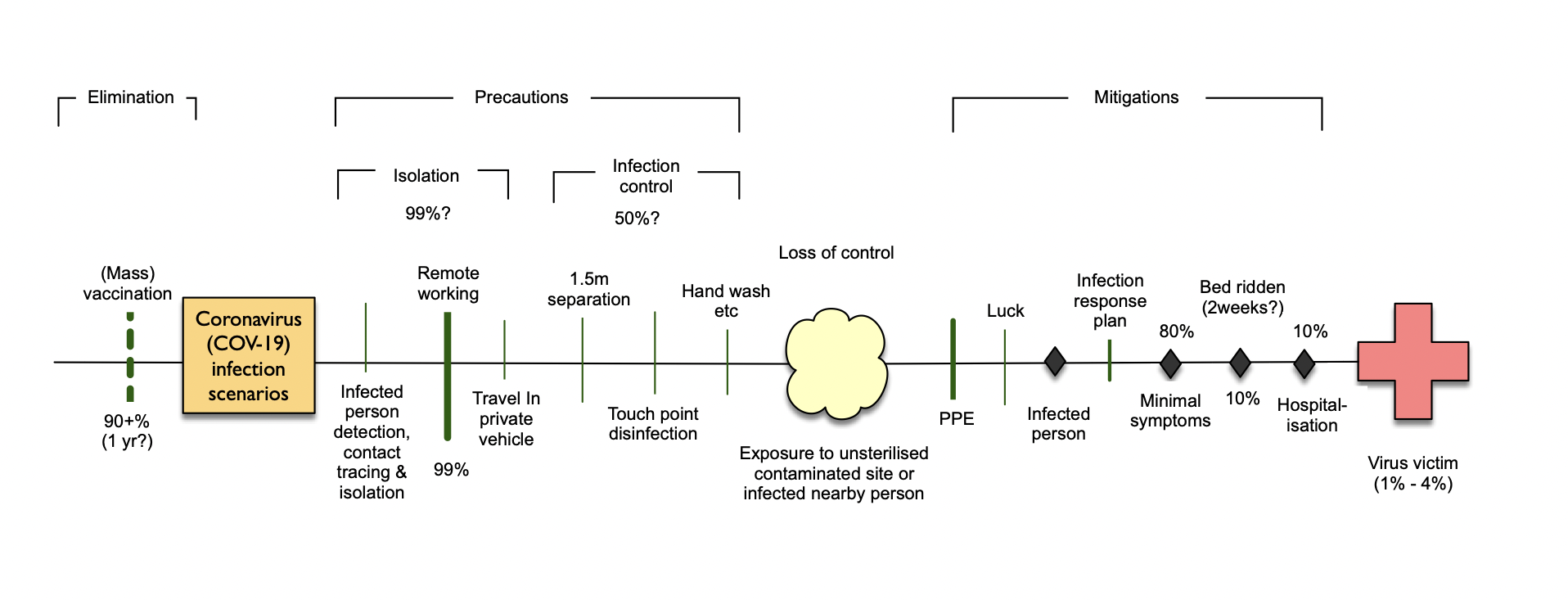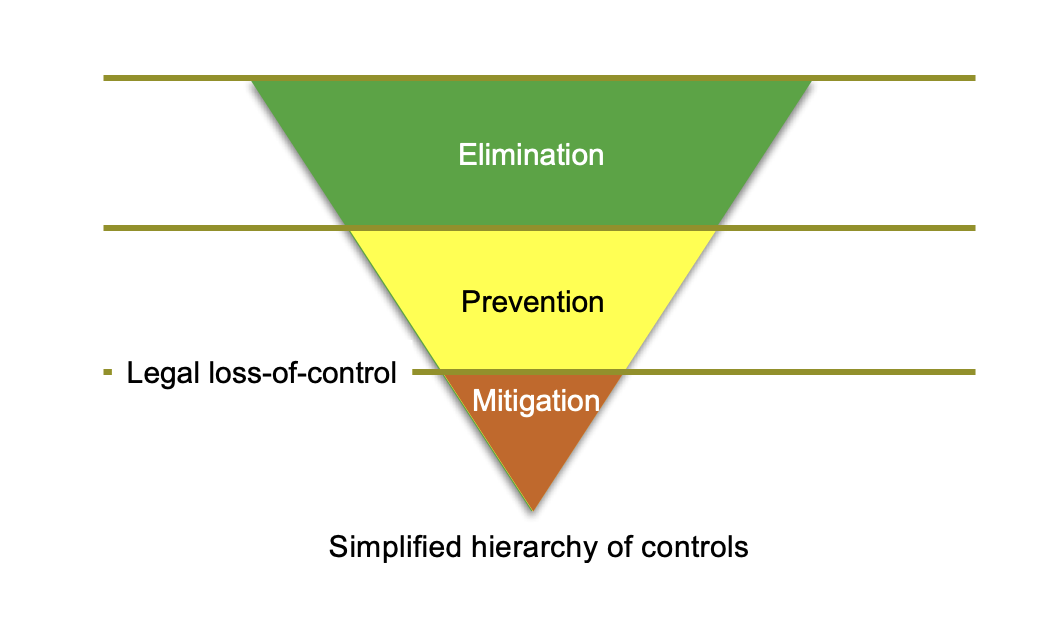Simplifying Hierarchy of Control for Due Diligence
The hierarchy of control is one of those central ideas that safety regulators have been using forever. But it is also one of those very simple ideas that has caused enormous confusion in due diligence.
In hierarchical control terms, the WHS legislation (or OHS in Victoria) provides for two levels of risk control: elimination so far as is reasonably practicable (SFAIRP), and if this cannot be achieved, minimisation SFAIRP.
In addition, criminal manslaughter provisions have been enacted in many jurisdictions.
The post-event test for this will be the common law test albeit to the statutory beyond reasonable doubt criteria.
For example, from WorkSafe Victoria:
The test is based on the existing common law test for criminal negligence in Victoria, and is an appropriately high standard considering the significant penalties for the new offence.
https://www.worksafe.vic.gov.au/victorias-new-workplace-manslaughter-offences
Post-event in court, from R2A’s experience acting as expert witnesses, there are three levels in the hierarchy of control:
- Elimination,
- Prevention, and
- Mitigation.
In causation terms most simply shown as single line threat-barrier diagrams such as the one for Covid 19 below.

Our collective safety regulators have other views. For example, the 2015 Code of Practice (How to Manage Work Health and Safety Risks) which has been adopted by ComCare and NSW has 3 levels of control measures whereas many other jurisdictions adopt the 6-level system like Western Australia. Victoria has a 4-level system.

This inconsistency between jurisdictions seriously undermines the whole idea of harmonised safety legislation. And it also muddles optimal SFAIRP control outcomes. For example, engineering can be an elimination option, as in removing a navigation hazard, a preventative control as in machine guarding, or a mitigation as in an airbag in a car.
In R2A’s view, which we have tested with very many lawyers, the judicial formulation shown below is the only hierarchy of control capable of surviving legal scrutiny and R2A’s preferred approach.

